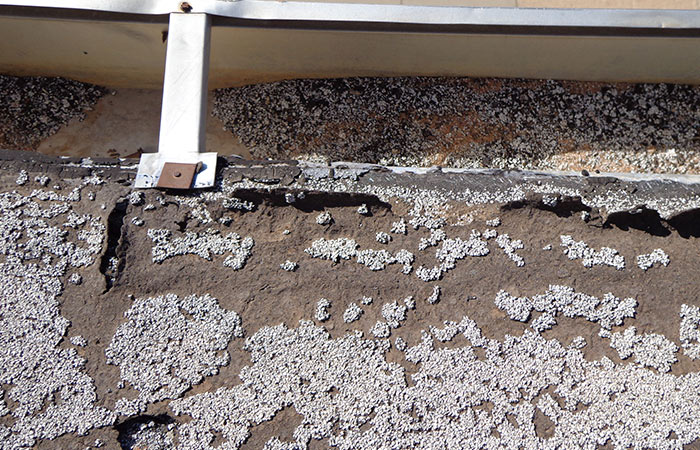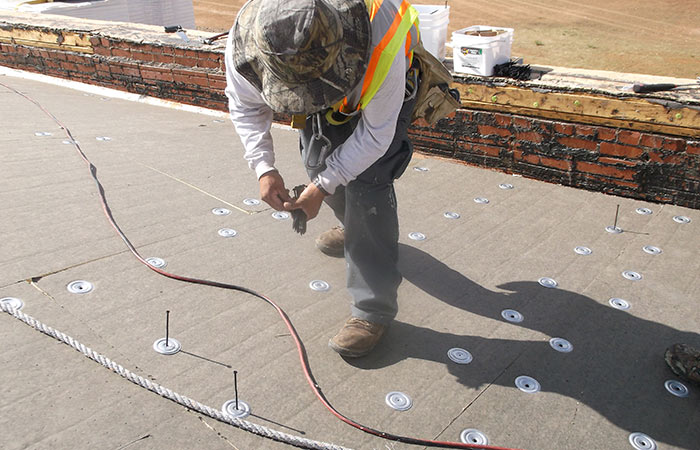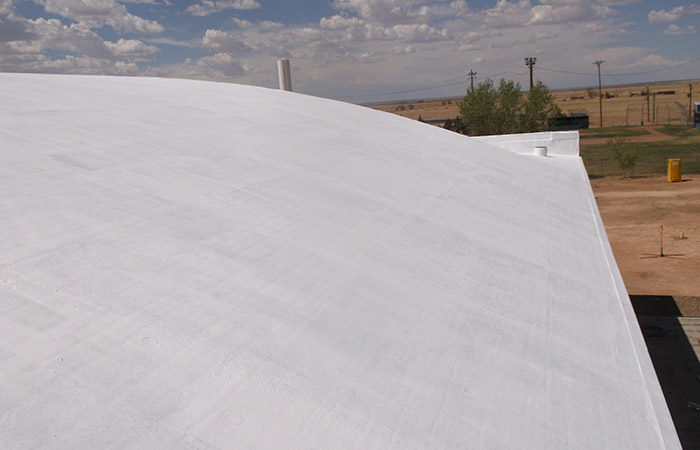The
contracting company RoofCARE has branches in Albuquerque,
Santa Fe, and Las Cruces
and uses those locations to serve all of New Mexico
and West Texas. It also has good working
relationships with many New Mexico school
districts, including the Floyd Municipal School District, according to Jonathan
Small, RoofCARE’s marketing director. That good relationship led to a roofing
job on a multipurpose building at a school in that district.
Small
said the company is accustomed to the process that comes with working for
public agencies such as school districts. “We do 70 percent of our work with
public entities in New Mexico, so
we’re very efficient with the process,” he said of RoofCARE, which has a total
of 35 employees. “We have a good understanding of what’s important to them and
how they conduct business.”
“About
half of the public school districts in New Mexico
are RoofCARE clients,” Small said. “We set up booths at a lot of educational
conferences, and we’re often stopping in at various districts, talking to the
appropriate people about any roofing needs they may have.”
“I
don’t know at what specific point we found out about it, but at a conference we
heard about how Floyd Schools had had a roof in dire need of comprehensive
services for several years,” Small said. “Once the district secured capital
funding, we scheduled an inspection to perform some diagnostics and made a roof
proposal at that point.
“When
the team assessed the roof, they found it was in poor condition.
“The
roof looked absolutely terrible,” Small said. “It was in really bad shape,
almost falling apart.”
RoofCARE
confirmed the roof was in failure and in need of replacement. After evaluating
their options, the district decided to utilize the Hydro-Stop PremiumCoat
fluid-applied roofing system — because it is both sustainable and highly-rated.
“This
system is energy efficient, durable, doesn’t require heavy equipment, is low
VOC [volatile organic compound], easy to maintain, offers up to 25-year
warranties, and is [Factory Manual] FM-rated as a roof system,” according to
Small. “These benefits were very attractive to Floyd Municipal
School’s
Superintendent and School Board, who approved the project after learning about
the proposed system.”
Once
the Floyd Municipal School District
had signed off on the job, the RoofCARE crew could begin assessing the work in
front of them.
 Raise the Roof
Raise the Roof
RoofCARE arrived
on site in late April of 2013 to start the big job ahead of them.
Before
the RoofCARE crew could begin its work, though, the school district hired an
abatement contractor to remove the existing roof, because it contained
asbestos.
The
RoofCARE team of five to six men then got to work replacing any broken or
saturated wood plank decking. They mechanically fastened new fire-rated
DensDeck and polyiso insulation over the deck.
After
installing new drip edge, the roof was ready for the fluid-applied system.
The
system was mostly installed over polyiso insulation in the field of the roof,
but it also had to be applied over curbs, penetrations, brick and stucco
parapet walls, and other roof details, Small said. While the insulation was
new, the parapet walls were in fair to poor condition.
The
team cleaned and prepared surfaces to receive the waterproofing by removing all
loose and flaking particles, grease, and laitance. For this job, they used a
stiff bristle push broom and power washing where necessary.
The
next step involved applying one coat of Hydro Stop’s FoundationCoat to the
substrate at the rate of 50–80 ft.²/gal. (4.6 m²/3.8 L–7.4 m²/3.8 L). Then,
PremiumCoat fabric was embedded into the wet FoundationCoat. A second coat of
FoundationCoat was brushed on to saturate the fabric, again applied at the rate
of 50–80 ft.²/gal. (4.6 m²/3.8 L–7.4 m²/3.8 L). The team took care to ensure
that adjacent runs of fabric were overlapped a minimum of 4 inches (10.2 cm).
 The
FoundationCoat was only applied with the use of approved roof brushes, so the
team did no rolling or spraying of it. The crew installed the same sequence of
FoundationCoat followed by fabric followed by FoundationCoat on the roof’s
perimeter and penetrations, using 12-inch (30.5 cm) rolls of fabric. They
waterproofed up vertical surfaces and onto the insulation a minimum of 6 inches
(15.2 cm) in each direction. Then
the team used 40-inch (1.0 m) rolls of fabric in between the FoundationCoat
components to seal the entire field of the roof.
The
FoundationCoat was only applied with the use of approved roof brushes, so the
team did no rolling or spraying of it. The crew installed the same sequence of
FoundationCoat followed by fabric followed by FoundationCoat on the roof’s
perimeter and penetrations, using 12-inch (30.5 cm) rolls of fabric. They
waterproofed up vertical surfaces and onto the insulation a minimum of 6 inches
(15.2 cm) in each direction. Then
the team used 40-inch (1.0 m) rolls of fabric in between the FoundationCoat
components to seal the entire field of the roof.
When
that portion of the system was complete, they applied four coats of Hydro
Stop’s FinishCoat. Each coat was applied at 120–140 ft.²/gal. (11.1 m²/3.8
L–13.0 m²/3.8 L), with a thickness between 11.5 mils and 13.4 mils (292.1–340.4
microns) wet and 6.1 mils and 7.2 mils (154.9–182.9 microns) dry per coat. That
left a total FinishCoat dry film thickness between 24.4 mils and 24.8 mils (619.8–629.9
microns).
School’s in Session
The biggest
challenge of the job was keeping the crew safe on the barrel-shaped roof, said
Abraham Carmona, the RoofCARE project manager who supervised the job. “Everyone
had to keep working with the harness on,” he said. Because the coating was
fluid applied, it was also important to maintain correct coverage rates to keep
the material from dripping off the barrel roof. “We had to build some support
and be harnessed in,” he said.
The
crew wore safety glasses, hard hats, gloves, and respirators, and they also
used fall protection. They harnessed themselves to a cable attached to two
anchors on either end of the roof. “By harnessing themselves to the cable, the
crew would be able to work across the length of the roof easily,” Small said.
This
challenge was made greater by the fact that the crew was working on a school
building while school was in session, Carmona said. “There were kids around the
school, at the gymnasium, kids going in and out,” he said. “We had to be sure
nothing fell, so we built supports for all of the buckets.”
The
other challenge, according to Carmona, was the weather. The 5-week job took
place around the rainy season, which meant every morning he had to check the
weather and make sure the crew would have at least 48 hours until the next
rain. “We had to tie in the roof every day to make sure if it rained, the
insulation wouldn’t get wet and the roof was watertight,” he said.
Extra Credit
All of their hard
work paid off. When the job was done, it was night and day compared with how
the roof looked when the crew started, according to Small. And that good work
led to even more business for RoofCARE.
“The
customer has been so pleased with the results of the project, they’ve recently
contracted RoofCARE to re-roof their gym and another BUR [built-up roof] gravel
roof with the same Hydro-Stop system,” Small said.
